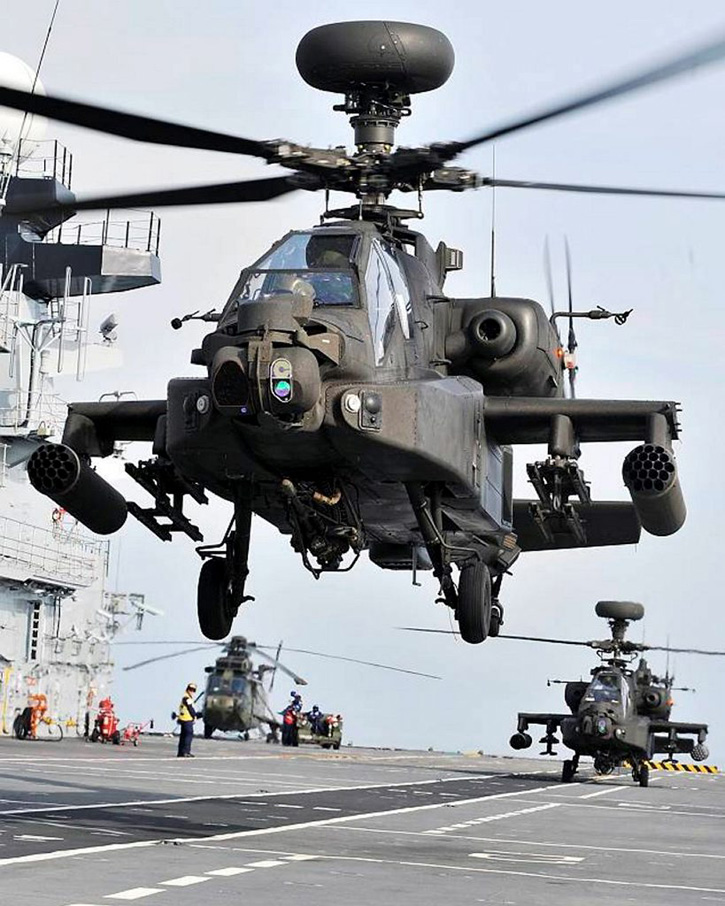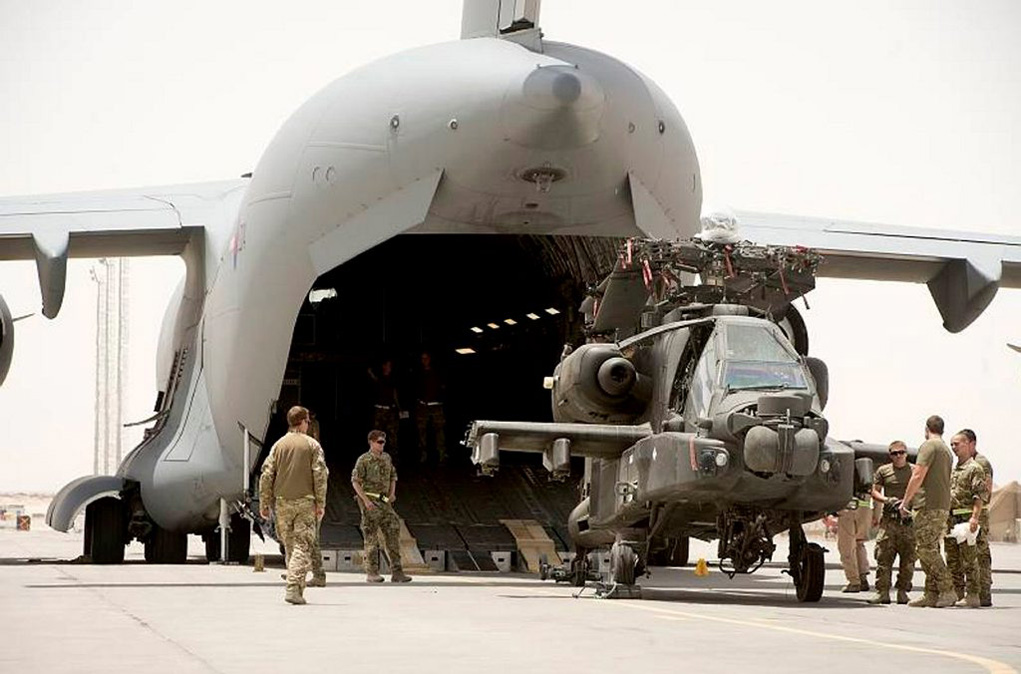The UK has mothballed a quarter of its AgustaWestland Boeing WAH-64 Apache Longbow AH.1 attack helicopters following the end of combat operations in Afghanistan. According to IHS Jane’s, 16 of the Army’s 66 Apaches were placed into storage, leaving a force of 50 helicopters.
The Army currently operates four squadrons at Wattisham Airfield in Suffolk, home for the 3rd and 4th Air regiments and 653 Operational Conversion Unit (OCU). The Army has not announced yet, whether the reduction will draw the stand down of some operational units or implemented proportionally across the fleet. In its Strategic Defense & Security Review of 2010 and 2012 planning round the Ministry of Defense identified the need to reduce the number of Apache helicopters after completing the drawdown in Afghanistan, an action that has been implemented since January 2015.


After their intensive operations in Afghanistan, Army WAH-64 Apache helicopters are often operated by the Army are often supporting naval operations attached to the Royal Navy helicopter carrier and assault ship HMS Ocean. Training operations have been curtailed by the high costs, and the Army is looking for alternative solutions, including the use of cheaper surrogate helicopters and mission simulation by synthetic means to lower training cost without hampering operational readiness.
While parts of the 16 helicopters are being used for the maintenance and support of the remaining 50 helicopters, the Army plans for further upgrades or ‘remanufacturing’ of those helicopters into the new AH-64E ‘Guardian’ model (formerly known as AH-64D Block III). The Army plans to maintain the Apache through the 2040s. The MOD plans to take a decision within a year.
The Apache attack helicopter is equipped to operate in all weather conditions, day or night. With the sensors it carries, Apache can and detect, classify and prioritise up to 256 potential targets in a matter of seconds. The most distinctive sensor is the Longbow radar, located above the rotor blades. The aircraft is also equipped with a day TV system, thermal imaging sight and direct view optics. It carries a mix of weapons including Hellfire missiles, guided and rockets, and a 30mm chain gun. The Apache is partly armored and is equipped with fully integrated defensive aid suite protecting it from small arms fire, missiles and Man Portable Air-Defense Missiles (MANPADS).
The latest ‘Guardian’ variant is fitted with modern avionics and communications systems, enabling full integration with associated unmanned systems. The enhanced Longbow radar used in this model is better fitted for maritime operation. Composite main rotor blades, new transmission and improved General Electric T700-GE-701D engines have produced a more powerful Apache improving overall performance and payload carrying capability. Unlike an upgrading, remanufacturing refers to a more comprehensive build of the aircraft. It is estimated that about 12 percent of AH-64E components are remanufactured in the process. The British conversion could be streamlined with the US Army plan to remanufacture 634 AH-64Ds into AH-64E standard by 2020.




















